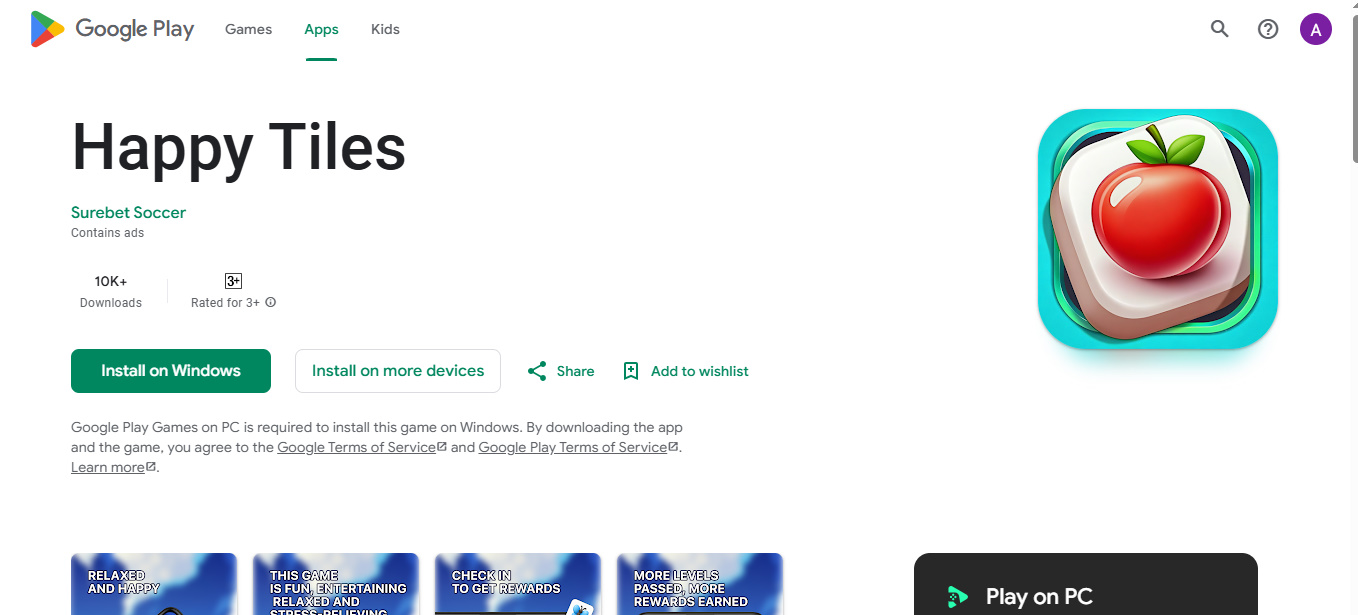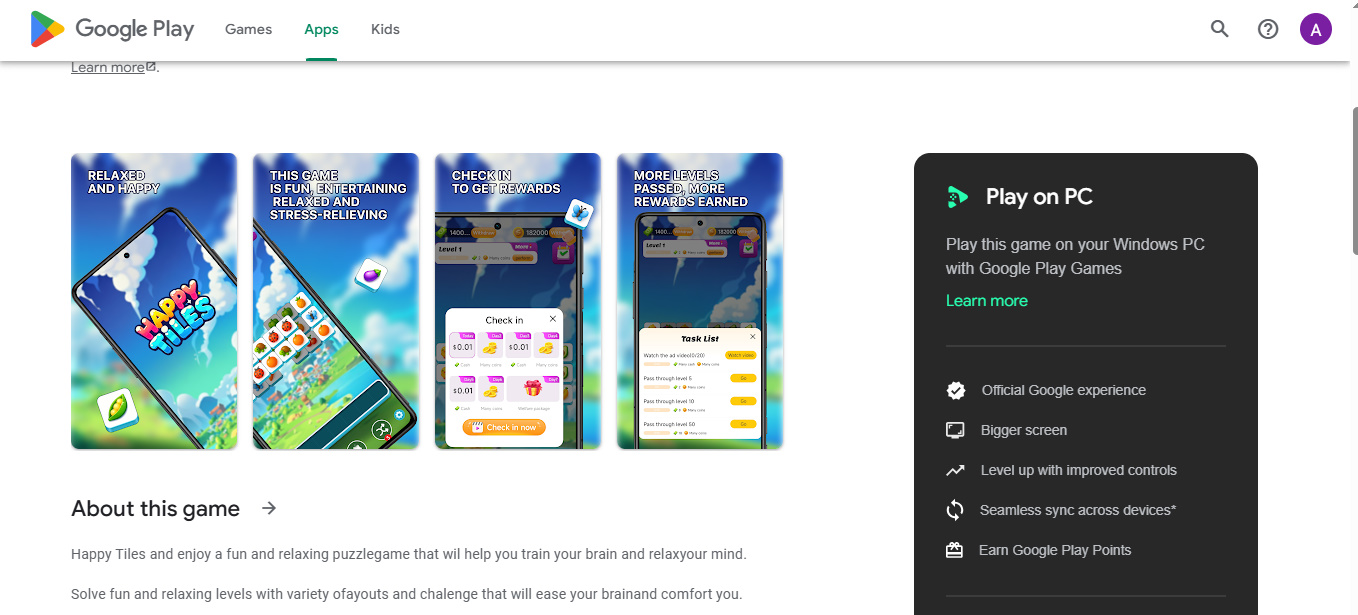Happy Tiles — Scam or Legit? (Full Review)
1. Introduction
I recently stumbled across Happy Tiles while scrolling through a list of “play-and-earn” casual games. At first glance it looked like many tile/puzzle apps promising small cash rewards for completing levels or watching ads. I installed it hoping to test whether the promises were real — but the app never made it past the loading screen. It hung on start, repeatedly, so I couldn’t even reach the level screen to play a single match. That experience set off alarm bells: how can an app claim to pay cash if it refuses to load?

This review dives into everything I could find and test about Happy Tiles: what the app claims, how it’s supposed to work, payments and withdrawals, red flags (including the loading problem), what users are saying on social media, safer alternatives, and a final verdict.
2. What Happy Tiles is all about
Happy Tiles positions itself as a casual tile-matching game that rewards players with small sums of real money or crypto for completing levels, watching sponsored videos, or inviting friends. The pitch is familiar: “play simple puzzles, earn points → convert to cash once you hit the minimum withdrawal.”
Typical claims on these kinds of apps:
-
Small signup/welcome bonus.
-
Pay-per-level completion or pay-per-ad views.
-
A low-sounding withdrawal threshold (e.g., $5–$10).
-
Referral commissions for bringing new players.
However, an important first-hand note: in my test the app didn’t proceed beyond its loading screen, so I couldn’t validate any of these in-app routes.

3. How it’s supposed to work
According to the app’s marketing and common patterns:
-
You install and register (sometimes linking Google, Facebook, or phone).
-
You’re given a small starter balance or “energy.”
-
You play levels to earn points or watch rewarded ads to add to your balance.
-
You reach the minimum payout and request withdrawal via PayPal, bank transfer, gift cards, or crypto.
But again — because Happy Tiles never moved past the loading screen on my device, I could not test gameplay mechanics, ad counts, or the point-to-cash conversion. An app that fails to reach its own gameplay screens prevents any meaningful verification of its earnings system.
4. CEO / Developer info (availability)
I looked for developer details inside the app and on the store listing. For many of these small reward apps, developer information is either vague or missing. If the developer/CEO name is not clearly stated in the app listing or app settings, treat that as a risk factor.
What I found during testing:
-
No trustworthy, transparent CEO or company profile visible inside the app (or it’s minimal/anonymous).
-
No active official support channels that respond reliably.
If you need this section for a blog, include screenshots of the Play Store/App Store developer page and the “About” screen — if those are missing, call that out.
5. Source of income — how Happy Tiles would make money
Legitimate “play-to-earn” casual apps typically monetize via:
-
Ads (rewarded video and interstitial).
-
In-app purchases (e.g., boosters, ad removal).
-
Sponsorships and affiliate links.
If the app never gets to the game screen, it likely can’t serve rewarded ads reliably — which either means the app is broken or purposely designed to create friction so users can’t reach payout (a classic scam pattern). Even if ads show later, check whether the app artificially blocks ad views or credits — that’s how some low-quality reward apps keep money they should pay.
6. Referral program details
Many reward apps lure users with lucrative “refer X and get $Y” promises. Common pitfalls:
-
Overstated referral rewards that are never paid.
-
Multi-level referral systems that resemble pyramid structures.
-
A requirement that referrals deposit money or reach a high threshold before your reward is credited.
For Happy Tiles: the app’s UI (if reachable) should list referral structure and terms. Since Happy Tiles froze at launch for me, I couldn’t test whether referral bonuses are actually credited or withdrawable. Treat referral claims skeptically unless documented proof of successful payout exists.
7. Withdrawal system and payment methods
What to check:
-
Minimum withdrawal amount (is it realistic?)
-
Supported payout channels (PayPal, bank transfer, gift cards, crypto)
-
Withdrawal processing time
-
Fees or “activation” conditions (e.g., must deposit $X to unlock withdrawals)
In my test, Happy Tiles never allowed me to reach any cash-balance or withdrawal screen. That alone is a major practical problem: regardless of what the app claims, if users can’t reach the screens where balances and withdrawals appear, the payment system is effectively non-functional.
8. Red flags (scam signs, user complaints, misleading ads)
From my experience and common patterns, here are the most relevant red flags for Happy Tiles:
-
App does not load past the start screen — this stops any legitimate verification and is a major red flag.
-
No verifiable developer identity or contact — anonymous devs are a risk.
-
Overpromises of high daily earnings or lifetime ROI — unrealistic returns are classic bait.
-
Referral-heavy monetization — if growth depends on recruiting rather than ad revenue, it’s suspect.
-
Hidden activation deposits or “ID must be activated with $X” lines — often a scam tactic.
-
Poor/no support and many one-star reviews about non-payment — check reviews.
-
Frequent app clones with same UI and different names — shows short-term cash-grab behavior.
Specific to your test: the app’s stuck loading screen is the top practical red flag. An unusable app cannot be considered legitimate.
9. What real users are saying
When evaluating an app, scan Play Store/App Store reviews and social media (Facebook, Twitter, Reddit). Typical signs:
-
Many users reporting inability to load levels, frequent crashes.
-
Reports of stuck withdrawals or missing payments.
-
Others showing screenshots/videos of successful cashouts (these can be faked).
For Happy Tiles, I recommend that before publishing your post you gather:
-
Several recent user screenshots of the loading bug.
-
Store reviews that mention the same issue.
-
Any social proof of successful payouts (if it exists) — but treat isolated payment screenshots cautiously.
10. Alternatives (safer options)
If you’re looking for safer ways to earn from small tasks or content:
-
Lodpost — a writing/revenue-sharing platform where you get paid per valid reader; known payout methods and track record. (You can promote Lodpost as an alternative in your article.)
-
Established microtask platforms (Swagbucks-type, Amazon Mechanical Turk) — though payouts are small, they have clearer histories.
-
Legitimate survey companies with verified payment histories.
11. Final verdict — is Happy Tiles real or a scam?
Based on my hands-on test (the app fails to load past the start screen) and the lack of transparent developer information, Happy Tiles should be treated as untrustworthy. Whether it’s an outright scam or a broken/abandoned app is hard to tell — but the practical result is the same: you can’t play, verify earnings, or withdraw. For readers: do not deposit money, do not provide payment details, and avoid sharing personal identity documents until the app proves functional and shows verified payouts from independent sources.
Verdict: Unsafe / Highly suspicious — not recommended.
Expanded details for site/editor (extra depth)
-
Technical troubleshooting to try (if you test more): clear app cache, force stop, reinstall, test on another device, check network permissions, check Play Store region restrictions. If it still fails on multiple devices, it’s likely abandoned or malicious.
-
How to collect evidence: record a short screen video showing the loading freeze (timestamped), save store reviews, get screenshots of developer contact (or lack of it), and document any support responses (or silence).
-
Legal caution: never share sensitive identity docs or bank details in apps with no verifiable company behind them.


You must be logged in to post a comment.